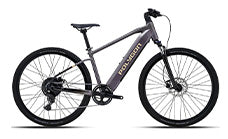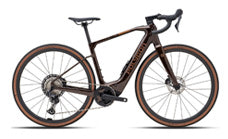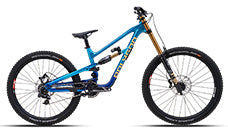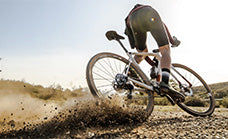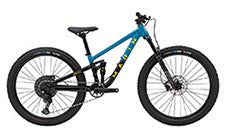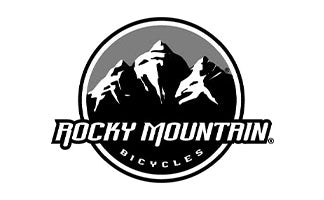Maintenance for Mountain Bikes: Keeping Your Ride in Peak Condition

Maintaining your mountain bike regularly is essential for ensuring its longevity and performance. Just as a car needs its service to keep running smoothly, your mountain bike requires the same attention to detail to tackle rugged terrains effectively. Proper care not only prolongs the life of your bike but also enhances your overall riding experience on challenging trails. By adhering to a consistent maintenance routine, you can avoid common mechanical issues and ensure that your bike is always trail-ready, providing a safe and enjoyable ride every time. This guide will outline the crucial steps in keeping your mountain bike in peak condition, so it continues to perform at its best, ride after ride.
Routine Cleaning and Inspection
Frequency of Cleaning
The frequency of cleaning your mountain bike largely depends on how often and in what conditions you ride. As a general guideline:
- After Every Ride: A quick wipe down to remove any dust or mud, especially if riding in wet or muddy conditions.
- Weekly Cleaning: If you ride several times a week, a more thorough cleaning is recommended to keep components in optimal condition.
- Monthly Deep Clean: For those who ride less frequently but want to maintain performance and prolong the lifespan of their bike.
Step-by-Step Cleaning Guide
Properly cleaning your mountain bike involves several key steps to ensure that all components remain in good working order:
- Preparation: Gather your tools and cleaning solutions. You'll need a bucket, bike-specific cleaner, brushes, sponge, and a hose or a low-pressure washer.
- Rinse: Begin by rinsing your bike gently to remove loose dirt and mud.
- Clean the Frame: Apply the cleaner to the frame with a sponge or brush, working from top to bottom. Pay special attention to areas where dirt accumulates.
- Drivetrain Care: Use a degreaser on the chain, chainrings, derailleur, and cassette. Employ a firm brush to scrub these areas thoroughly to remove built-up grime.
- Wheels and Tyres: Scrub the wheels and tyres with a brush. Be sure to clean between the spokes and around the rims.
- Rinse and Dry: Rinse the bike with fresh water to remove all soap and loosened dirt. Dry the bike with a clean cloth to prevent rusting.
Regular Inspection Checklist
To prevent breakdowns and ensure safety, regularly inspect these key components for signs of wear or damage:
- Chain: Look for rust, stiff links, or wear. Replace the chain if it’s stretched or damaged.
- Brakes: Check for worn pads, and ensure that all components function smoothly. Listen for unusual noises that might indicate it's time to replace or adjust them.
- Tyres: Inspect for cuts, punctures, or worn treads. Ensure they are inflated to the correct pressure.
- Cables: Examine brake and gear cables for fraying or rust. Replace if necessary.
- Suspension: Check for leaks, squeaks, or loose parts in the suspension forks and rear shocks.
- Bolts and Fasteners: Ensure all bolts and fasteners are tight and secure to avoid any loose components during rides.
Regular cleaning and inspections are crucial for maintaining your mountain bike’s performance and safety. This routine not only keeps your bike in good working order but also helps you catch potential issues before they become serious problems.
Drivetrain Maintenance
Lubricating the Chain
Proper lubrication of the chain is essential for smooth shifting and reducing wear. Here's how to effectively clean and lubricate your mountain bike chain:
- Clean the Chain: Before lubricating, ensure the chain is free from dirt and grime. Use a degreaser and a chain cleaning device or a stiff brush to thoroughly clean the chain. Rinse with water and dry completely.
- Apply Lubricant: Use a quality chain lubricant suited for the riding conditions. Apply the lubricant sparingly to each link while slowly rotating the pedals in a backward motion to ensure even coverage.
- Wipe Off Excess: After lubricating, gently wipe off any excess lubricant with a clean cloth. Excess lubricant can attract more dirt.
Checking and Replacing the Chain
Regular checks can prevent excessive wear and tear on your drivetrain components:
- Check for Wear: Use a chain checker tool to measure chain wear. If the tool indicates significant wear (typically when it fits into the links at .75% stretch), it’s time to consider replacing your chain.
- Visual Inspection: Look for rust, stiff links, or any deformation. These are signs that the chain might need replacing.
- Replacement Frequency: Typically, a chain should be replaced every 2,000 to 3,000 miles, depending on riding conditions and maintenance habits.
Derailleur Adjustments
Properly adjusted derailleurs are crucial for accurate gear shifting:
- Check Derailleur Alignment: Ensure that the derailleur hanger is not bent and that the derailleur aligns vertically and horizontally with the chain.
- Adjust the Limit Screws: These screws control how far the derailleur can move towards or away from the spokes (low limit) and towards the smallest cog (high limit). Adjust these to ensure the chain does not drop off the gears or hit the spokes.
- Set Cable Tension: Shift to a middle gear, then adjust the cable tension so that shifting is smooth and precise. If shifting is sluggish, tighten the cable; if it’s too harsh, loosen it.
- Test and Tune: After adjustments, cycle through all gears to test the shifting. Listen for skipping or hesitation and adjust accordingly.
Regular maintenance of your mountain bike’s drivetrain will enhance both the lifespan of the bike and your overall riding experience. Keeping these components in good working order ensures efficient and enjoyable rides on even the most challenging terrains.
Brake System Care
Brake Pads Inspection and Replacement
Regular inspection and replacement of brake pads are critical to ensure effective braking performance:
- Inspect Brake Pads: Lift the bike and spin the wheels to view the brake pads. Check for wear by measuring the thickness of the pad material. If it's less than 1 mm thick or if the wear indicator line (if present) is reached, it's time for a replacement.
- Remove and Replace: To replace the pads, remove the wheel and then the pin or bolt that holds the pads in the brake caliper. Slide out the old pads, insert new ones, and secure them back with the pin or bolt. Ensure they are aligned correctly.
- Bed in New Pads: After replacing the pads, ride your bike in a safe area and perform several short stops to bed in the new pads. This process ensures optimal performance and longevity.
Bleeding Hydraulic Brakes
Bleeding hydraulic brakes is necessary to maintain responsive and smooth braking. Air in the lines can lead to spongy brake feel.
- Prepare the Bleed Kit: Assemble your brake bleed kit according to the manufacturer’s instructions. Each brake system might require a specific fluid type (e.g., DOT fluid or mineral oil).
- Attach the Syringe and Fill: Attach the syringe filled with brake fluid to the bleed port on the caliper. Open the bleed nipple on the lever and connect another syringe or tube to catch the old fluid.
- Flush the System: Gently push the fluid through the system from the caliper up to the lever to flush out air bubbles and old fluid. Keep adding fresh fluid until what comes out is clear and free of bubbles.
- Close System and Test: Close off the bleed nipples and ensure everything is tight. Test the brake lever for firmness and re-bleed if necessary.
Adjusting Brake Cables
For mechanical brake systems, proper cable tension is key to effective braking:
- Check Cable Tension: Squeeze the brake lever to gauge tension. If the lever pulls too close to the handlebar, the cable tension is too loose.
- Adjust the Cable: Locate the barrel adjuster on the brake lever or caliper. Turn it counter-clockwise to tighten the tension or clockwise to loosen it. Adjust until the lever has about a third of its total travel before the brakes engage.
- Secure and Test: Once adjusted, secure the lock nut on the barrel adjuster if present, and test the brakes by spinning the wheel and applying the brake. Adjust further if necessary.
Maintaining your mountain bike’s brake system through regular inspection, adjustment, and replacement ensures safe and reliable performance on all your rides, particularly on challenging trails where effective braking is essential.
Tyres and Wheels
Tyre Pressure and Condition
Maintaining the correct tyre pressure and regularly inspecting the tyres are crucial for safe and efficient riding:
- Check Tyre Pressure: Ensure your tyres are inflated according to the specifications for your riding style and terrain. Mountain bikes typically require lower pressures for better traction on rough trails, whereas higher pressures are suitable for smooth surfaces to reduce rolling resistance.
- Inspect Tyres: Regularly examine your tyres for signs of wear such as deep cuts, punctures, or worn treads. Look out for embedded stones or thorns that could lead to punctures. Replace tyres that show excessive wear to avoid blowouts and improve grip.
Truing Wheels
Truing wheels is the process of adjusting the tension of the spokes to ensure that the wheel is perfectly round and well-aligned:
- Check Wheel Alignment: Spin the wheel in your bike frame and observe it as it rotates. Look for any side-to-side wobble or up-and-down bumps.
- Adjust Spokes: Use a spoke wrench to adjust the tension. Tighten the spoke nipples on the side where the rim deviates to pull it back into alignment. Conversely, you can loosen the spokes on the opposite side if necessary.
- Repeat and Check: Continue making adjustments and spinning the wheel to check for improvements. This process might require patience and precision to achieve perfect alignment.
Hub Maintenance
Proper maintenance of the wheel hubs is essential for smooth wheel rotation and overall bike performance:
- Clean the Hubs: Remove the wheels from the bike. Open the hub caps with the appropriate tools (usually a set of Allen keys or a hub wrench). Clean inside the hub with a cloth and a mild solvent to remove old grease and accumulated dirt.
- Inspect and Lubricate: Check the condition of the bearings and races for any signs of wear or damage. Replace any worn parts. Liberally apply new grease to the bearings before reassembling the hub.
- Reassemble and Adjust: Carefully put the hub components back together. Make sure the hub is not too tight or too loose; adjust the hub cones to achieve smooth rotation without play in the wheel.
Regular attention to your mountain bike's tyres, wheels, and hubs not only enhances the riding experience but also extends the life of these critical components. Proper maintenance ensures that your bike remains reliable and performs optimally on even the most challenging terrains.
Suspension Care
Shock and Fork Maintenance
Proper maintenance of your mountain bike's shock absorbers and forks is crucial for optimal ride quality and the longevity of your suspension system:
- Regular Cleaning: After each ride, especially in muddy or dusty conditions, clean your suspension components. Use a soft brush and mild soap to remove debris and avoid harsh chemicals that can damage the seals and finish.
- Lubrication: Apply a suspension-specific lubricant to the stanchions (the smooth, shiny part of the fork) and wipe off any excess. This helps to reduce friction and protect against wear and corrosion.
- Check for Damage: Regularly inspect the shock and fork for any signs of damage such as scratches or dents on the stanchions. Even minor damage can compromise the seals and allow dirt to enter the system.
- Adjust Air Pressure: For air-sprung systems, check and adjust the air pressure according to your weight and riding style. This helps maintain the correct ride height and suspension performance.
Seal Inspection and Replacement
Keeping the seals of your suspension system in good condition is essential to prevent leaks and protect the internal components:
- Inspect Seals: Regularly check the seals for signs of wear or damage, such as cracking or excessive dirt buildup. Look for any oil leaks around the seal area, which indicate that the seals may be failing.
- Cleaning Seals: Clean around the seal area gently with a soft cloth to remove any dirt or debris that could cause seal damage. Use a seal pick or a similar tool to carefully remove any stubborn dirt, being careful not to scratch the stanchions.
- Replace Seals: If the seals are worn out or damaged, replace them to prevent further damage to your suspension system. Seal kits are available for most types of shocks and forks, and many riders can perform this replacement at home with some basic tools.
- Disassembly: Carefully disassemble the part of the fork or shock containing the seals, following the manufacturer's instructions.
- Install New Seals: Clean the exposed areas thoroughly before fitting new seals. Apply a thin layer of suspension grease to the new seals during installation to enhance their performance and longevity.
- Reassembly: Reassemble the components, ensuring everything is correctly aligned and tightened according to the manufacturer's specifications.
Proactive and regular maintenance of your mountain bike’s suspension not only enhances the overall ride quality but also significantly extends the life of these critical components. By keeping them clean, well-lubricated, and promptly replacing worn seals, you can ensure that your bike remains responsive and capable on even the most challenging trails.
Seasonal Adjustments and Storage
Preparing for Different Seasons
Mountain biking in different seasonal conditions requires specific adjustments to ensure safety, performance, and comfort:
- Mud: For wet and muddy conditions, increase the tyre tread depth and width to enhance mud clearance and traction. Consider reducing tyre pressure slightly to improve grip. Apply a wet lubricant to the chain and moving components to protect against moisture.
- Dust: In dry and dusty conditions, use a dry lubricant on the chain to avoid attracting dust. Ensure all seals and bearings are clean and well-protected to prevent dust ingress which can wear down components.
- Snow: For snowy conditions, consider using tyres with metal studs for better traction. Increase the use of waterproof lubricants and check that all components are well-sealed against moisture ingress. Also, adjust the suspension settings to be softer, as the cold can stiffen the response.
Proper Storage Techniques
Storing your mountain bike properly during the off-seasons is crucial to ensure it remains in good condition and is ready to ride when you are:
- Clean Before Storing: Thoroughly clean your bike to remove any dirt, grime, or salt (if ridden on salted roads) which can corrode metal parts and degrade plastics and rubbers.
- Lubrication: Apply a layer of lubricant to the chain, cables, and any moving parts to prevent rust and corrosion.
- Tyre Pressure: Inflate the tyres to the correct pressure to avoid flat spots or degradation of the sidewalls while stored.
- Storage Location: Store the bike in a cool, dry place away from direct sunlight and moisture. If possible, hang the bike from a rack or stand it on a bike stand to keep the tyres off the ground.
- Cover the Bike: Use a breathable cover to protect the bike from dust without trapping moisture, which can lead to rust and corrosion.
By making the necessary adjustments for different riding conditions and following proper storage techniques, you can ensure that your mountain bike remains in peak condition, ready for action whenever the next season starts.
Conclusion
Regular maintenance is fundamental to ensuring that your mountain bike remains in excellent condition, delivering optimal performance and reliability, regardless of the terrain or weather conditions you encounter. Taking the time to clean, inspect, and adjust your bike not only extends its lifespan but also enhances your overall riding experience, making each adventure safer and more enjoyable.
Whether you're tackling muddy trails, dusty paths, or snowy routes, the right preparation and seasonal adjustments can make a significant difference. Moreover, proper storage techniques during off-seasons help preserve your bike's integrity and readiness for when you next decide to ride.
For those who are keen to take charge of their bike's maintenance, learning these essential skills can be incredibly rewarding and empowering. There are numerous resources available, from online tutorials to workshops hosted by local bike shops, that can provide you with the knowledge and confidence to perform regular upkeep on your own. However, for more complex tasks, or if you're unsure of any procedures, it's wise to seek professional help. Regular visits to a skilled mechanic can prevent minor issues from becoming major problems, ensuring your bike always performs at its best.
By committing to a consistent maintenance routine, you not only safeguard your investment but also enhance your mountain biking experience, ensuring that every ride is as exhilarating and safe as possible.


